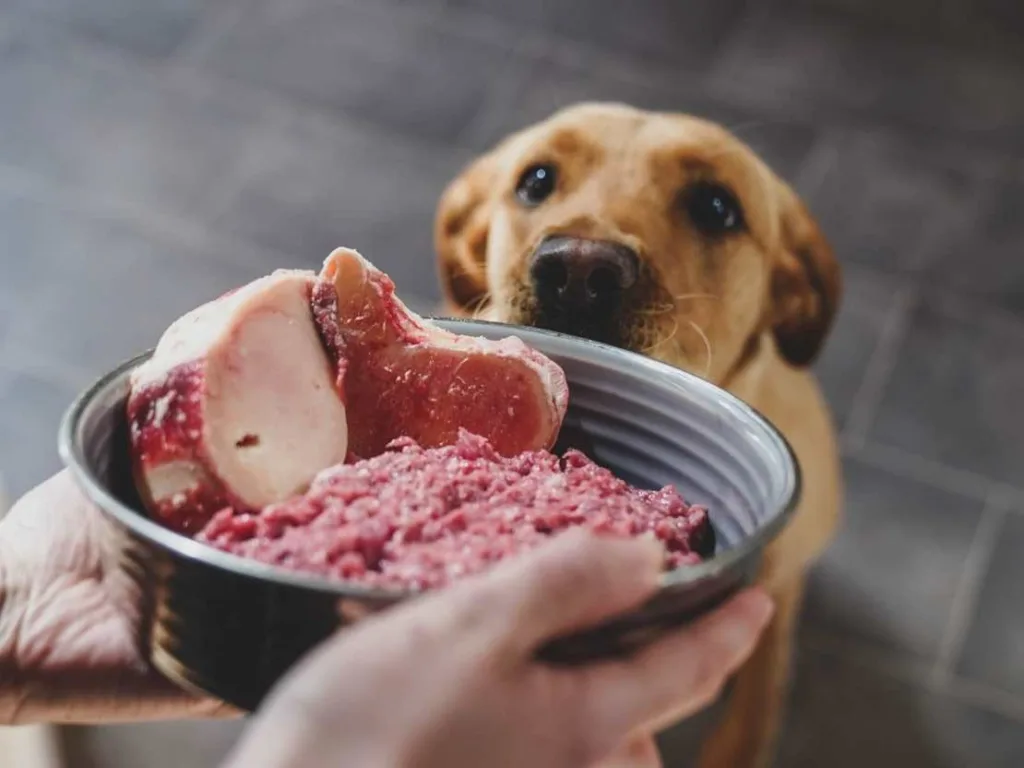Supporting dogs’ wellbeing is one of the great privileges of being a devoted pet owner. As our furry friends rely on us for their every need, it is our responsibility to make caring choices on their behalf. An area we must prioritize is helping them achieve and maintain a healthy body condition.
The reality is excess weight negatively affects many aspects of canine health. Carrying extra pounds impacts dogs’ mobility, energy levels, digestive function, kidney and liver health, immune function, wound healing, lifespan and disease risks (including diabetes, orthopedic problems, many cancers, and more). Across many species, maintaining lean body mass correlates strongly with longevity. Our food choices and activity plans for dogs have very real consequences.

As caring owners seek the best for beloved pets, many grapple with canine weight management. Despite pure intentions, our dogs’ big adorable eyes have a way of convincing us to provide overly generous treats! Additionally, many good-natured owners are unaware of ideal canine calorie intake, so despite focusing on nutritionally balanced dog foods, they still overfeed. Other common hurdles owners face are lack of exercise due to apartment living, dogs’ naturally slowing metabolism as they are neutered/spayed, and genetic tendencies of some breeds to gain weight more easily.
The keys to sustainable success with canine weight loss are two-fold: modifying environment and habits to encourage activity paired with gentle calorie control per veterinary guidance. Simply put, the foundations should be proper species-appropriate nutrition and regular exercise. However, some newly emerging research also points to certain supplements which may provide additional metabolic support for weight management in dogs.
In this post, we will briefly explore the mechanics of obesity in dogs. We will then gently discuss the evidence, considerations and cautions around four such supplements of interest for canine weight loss assistance: green tea extract, omega-3 fatty acids, L-carnitine and glucosamine with chondroitin. As always, please interpret the information presented as general background only. All dogs have unique needs and risk factors. You should consult your veterinarian before making any significant changes to your dog’s care plan. The goal is to provide loving support during their all-too-short time with us.
Understanding Canine Weight Management Challenges
A. The Importance of Maintaining Healthy Weight
Before exploring additive options, it is vital we understand the imperative for canine weight optimization. Addressing excess adipose tissue (body fat) truly is a matter of health and wellbeing. Pet obesity mirrors growing human struggles with over one-third of US dogs now overweight or obese. The negative impacts are significant.
Carrying extra pounds places abnormal strain on joints – especially hips, elbows and knees. This leads to accelerated development of arthritis and mobility impairment. Additionally excess body fat puts pressure on organs like the heart and lungs. Overweight dogs consequently tend to fatigue more easily and be prone to breathing issues. Digestion suffers as well, with poor gut motility, sloshing stomachs and loose stools common. Obesity is also strongly linked to kidney disease, high blood pressure, heart disease and fatty liver syndrome.
From an endocrine standpoint, fat cells themselves disrupt normal hormonal signaling. Carrying excess adipose encourages higher circulating insulin, estrogen, cortisol and inflammatory signals. This metastasizes into higher cancer risks. Overweight dogs have markedly increased likelihood of getting mast cell tumors, mammary cancer, bladder cancer, lymphoma and prostate cancer.
Finally from an immune perspective, normal anti-inflammatory processes are thrown off in corpulent canines. Being overweight makes dogs less able to regulate body temperature and more prone to heat stroke. Infection recovery and wound healing are impeded. And ultimately, arthritic immobility paired with immune dysfunction take their toll – markedly shortening lifespans.
Clearly, maintaining healthy lean body composition should be a top priority for dog owners. Allowing dogs to reach and sustain ideal weight must become the new normal. We must balance treating our hearts with nurturing our dogs’ health. The two, in fact, are intertwined.

B. Common Struggles Faced by Dog Owners
Caring deeply about their pets, most owners do not intentionally allow unhealthy excess weight gain. The causes often include:
Difficulty Restricting Treats: Dogs know how to plea with those big brown eyes! And with the best intentions to show our love, most owners dole out excess treats and table food. High calorie extras on top of balanced meals quickly tip the scales.
Lack of Exercise: Apartment living and busy lifestyles may limit activity. Dogs need daily exercise – both for calorie burn and for mental enrichment. Finding ways to integrate walking, play time and environmental exploration is essential.
Medical Conditions: Issues like hypothyroidism or chronic pain do negatively impact metabolic rate and mobility. Caring owners can work with their vets to creates customized care plans.
Neutering Effects: While absolutely warranted for population control, removing reproductive hormones often slows dogs’ metabolism. Altered animals need 30% fewer daily calories.
Genetic Tendencies: Some pure breeds are now prone to obesity. Labrador retrievers, pugs, cocker spaniels and Cavalier King Charles spaniels tend to gain more easily. This makes appropriate feeding very important.
C. The Role of Nutrition and Exercise First
While later we will look at emerging supplement research for additional assistance, it is imperative to recognize the core solutions for canine weight optimization remain proper feeding and regular exercise. These lifestyle foundations positively impact weight as well as overall wellness.
Following breed-specific guidelines, owners ideally should feed measured, scheduled meals of species-appropriate commercial or home-prepared diet formulas. Canned food may allow accurate calorie control. Treats must be very limited and accounted for in daily calorie totals. Routine daily exercise should incorporate both aerobic movement and muscle-building activity. The keys are consistency, accountability and veterinary guidance on safe weight loss rates.
Making healthy lifestyle choices for dogs also enriches owners’ lives. Adopting pet-friendly routines provides motivation for people to pursue fitness as well! Going on family walks, playing active games together and monitoring intake educate children on smart long-term habits also.
Exploring Adjunctive Supplements for Weight Loss Assistance
While restructuring nutrition and exercise should be the basis of canine weight optimization programs, a number of supplements appear to show some promise in assisting metabolic efficiency and weight loss results. Individual variability remains high however. Owners should view such additions only as potential adjuncts to the lifestyle-based core of veterinarian prescribed regimens.
Research on safety and efficacy of nutraceuticals in pets significantly lags behind the explosive growth (and marketing hype) around many products. As people pursue self-improvement, we often project desired quick fixes onto our dogs as well. We must be cautious, however, to balance hope with science. Little oversight regulates pet supplement safety or verified benefit claims. Published clinical trials in dogs are slowly emerging but remain very limited at this stage.
As caring owners, we must apply balanced discernment. While wanting powerful benefit for beloved dogs, we seek to ‘first do no harm’. Moving forward gently, watching for subtle impacts and adjusting approaches along the way is wise. Some options to potentially discuss with your vet include:

A. Green Tea Extract
Green tea is renowned for its antioxidant properties and health benefits across many species, humans included. In recent years, a number of canine weight loss foods and treats seeking a perception of natural wholesomeness have included added green tea extracts for purported metabolic boost. Unfortunately rigorous efficacy research is still lacking but small-scale studies have shown mild signals.
Potential Mechanisms: Compounds in green tea called EGCG (epigallocatechin-3-gallate) and caffeine appear to mildly boost resting metabolism, fat oxidization rates and liver fatty acid uptake in dogs. This indicates enhanced ability to metabolize fats. The polyphenols also regulate hunger signals within the digestive system to some degree. Through these mechanisms, green tea complexes may support gradual fat loss and body recomposition when combined with sensible nutrition plans. Observed side effects are generally minimal but can include agitation from excess caffeine in certain sensitive individuals. Many veterinary nutritionists cautiously support exploring extracts in canine plans at reasonable safe dosages but emphasize the need for more published evidence on mechanisms and efficacy in dogs.
Suggested Administration: Most canine weight management research studies exploring green tea have used dosages from 100 to 250 mg/day of standardized catechin extract for small to large dogs, respectively. Published trials showing signals to date have run 6 to 18 weeks duration. If incorporating such supplements, owners should start low, monitor reactions closely and titrate dosage upward very gradually under veterinary guidance based on weight loss response and stool quality for individual dogs.
B. Omega-3 Fatty Acids
Omega-3 fatty acids provide extensive health benefits – curbing inflammation, sharpening mental function and stabilizing moods. In humans and some other species, increased omega-3 intake also supports weight management. Research on companion animals is still quite limited but initial small studies show promising indicators for assisting dogs as well.
Potential Mechanisms: Omega-3 supplementation leads to complex biochemical shifts which sensitize fat cells to signals of satiety/fullness – allowing dogs to feel satisfied with lower calorie intake. These fats also promote glucose being stored as muscle glycogen rather than accumulating as body fat. Additionally, improved blood flow supports activity and mobility – for dogs already struggling with joint issues. So enhanced comfort may enable more regular play/exercise. Through these metabolic, hormonal and mechanical mechanisms, improved omega-3 status appears to assist attaining and preserving healthy lean mass.
Suggested Administration: For small dogs under 30 lbs, an EPA/DHA combo dose of 90-150 mg daily would be reasonable to potentially help weight normalization along with lifestyle adjustments. Medium dogs up to 90 lbs could be provided up to 300 mg/day. For large breeds, around 500 mg per day may be warranted. Veterinary guidance is essential given omega-3s can prolong bleeding times; care is needed if pets are on any anticoagulant medications or have upcoming surgeries. If using supplements, choose quality controlled reputable brands marketed specifically for pets – with EPA/DHA amounts confirmed on third-party testing. Monitor for ongoing benefit over 8 to 12 week trial. Discontinue use if any concerns arise.
C. L-Carnitine
L-Carnitine is an amino acid compound which shuttles fats within cells to be burned for fuel. This helps regulate oxidation rates and metabolic efficiency. For people struggling with weight regulation, L-carnitine supplements often support fat loss efforts. Early signals now suggest the compound may similarly benefit overweight pet populations.
Potential Mechanisms: During weight loss, fatty acids flood blood circulation on route to cells for energy utilization. Unassisted, this can overwhelm normal metabolic machinery. L-Carnitine acts as a carrier molecule bonding to fatty acids, transporting them into mitochondria sites within cells – for safe breakdown. This prevents toxic buildup in blood and organs during fat mobilization. Additionally, shuttling with carnitine increases burning calories from fat while decreasing glucose dependence. By enhancing metabolic flexibility and capacity, L-Carnitine optimizes safe fat loss.
Suggested Administration: Canine studies use oral doses from 50 to 100 mg active pure L-Carnitine per 10 lbs bodyweight, split into twice daily feedings. Introduce low dose first, gradually increase over 4 weeks if no digestive upset. Monitor urine concentration; excess dose causes wasting. Results seen in 6-16 weeks. Efficacy is variable between individual dogs due to differing inherent carnitine biosynthesis abilities. Custom vet-advised levels are important. If providing supplements, use reputable quality brands with third-party purity verification specific for pets.
D. Glucosamine and Chondroitin
While not directly implicated in fat metabolism or appetite suppression, glucosamine and chondroitin joint supplements have shown benefit for assisting sustainable mobility and comfort during canine weight loss efforts. Helping ease joint pain can allow dogs struggling with arthritis to exercise more consistently – further optimizing results long term.
Potential Mechanisms: Glucosamine provides building blocks for cartilage regeneration while chondroitin lubricates joints. These compounds are naturally present in joints but degrade with age and weight stress. Levels cannot replenish fast enough once advanced arthritis develops. Oral supplements taken consistently long term provide raw materials directly supporting joint structure preservation and pain relief. Over 8 to 12 weeks protective effects build. Enhanced mobility and activity then accelerate natural weight management.
Suggested Administration: Administration levels must be tailored per individual. Larger dogs need more; smaller dogs need surprisingly little. Starting guidelines would be 500 mg glucosamine + 400 mg chondroitin daily for dogs under 50 lbs scaling upward for heavier dogs. Vet guidance is essential to balance safety and efficacy especially when combo dosing with other supplements like omega-3s. Monitor for improved activity tolerance. Discontinue immediately if any appetite changes or diarrhea. As effects accumulate, dosages may be titrated downward.

Introducing Supplements into Overall Care Plans
If electing a trial use of select supplements, owners should transition slowly and methodically under veterinary supervision. Gradual introduction allows observation of subtle impacts to determine optimal individually tailored levels and combinations for a given dog. Patience truly is key allowing 6 to 8 weeks to gauge effects before further adjustments.
Suggested considerations when launching supplement regimens:
A. Transition Diet and Supplements Slowly
- Introduce new items individually first to assign any reactions
- Start supplements at 25% planned dosage with meals
- Every 4 to 7 days, increase proportionally if no issues
- Reach full dose in 4 weeks for improved tolerance
B. Monitor Stool and Behavior Changes
- Loose stool or vomiting may indicate too abrupt addition
- Decreased food interest or malaise warrant pausing use
- Increased thirst or urination to watch as well
C. Allow Ample Time to See Measurable Changes
- Stable baseline needed before assessing impacts
- Mark progress qualitatively regarding mobility, energy etc initially
- Follow weight quantitatively long term every 4 to 6 weeks
- Adjust items as needed in communication with veterinarian
In Summary
Our dogs rely on us fully for both day-to-day care and nurturing their long-term health. Protecting beloved pets from preventable disease brought on by excess weight is a profound privilege and duty. Through education and gently optimized nutrition, exercise and select adjuncts, caring owners can successfully help dogs achieve sustainable healthy weights – adding quality years together.
As we have explored, fitness programming for pets can be as individualized as it is for people. There are no universally guaranteed quick fixes. Patience and persistence pay off. Modern science offers us greater understanding of canine physiology and metabolism than past generations enjoyed. Leveraging this knowledge through veterinarian partnerships focusing on: species-appropriate nutrition, enriched routines, medical support and cautiously leveraged supplementation when warranted gives our loyal four-legged companions their best shot at strong vitality across more years together.
Here’s to sharing joy, adventure and optimal wellness with cherished pets! Our homes and hearts are undoubtedly fuller for it.
Next Steps
To continue learning about canine health, please refer to reputable resources such as veterinary college clinical nutrition departments. Schedule regular wellness check-ups with your trusted vet. Together we make progress! Please reach out with any questions on the information shared today. Here’s to happy healthy hounds!
Thank you for reading this post, don't forget to subscribe to our free newsletter
!